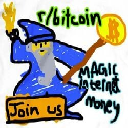-
 Bitcoin
Bitcoin $85,432.9288
1.79% -
 Ethereum
Ethereum $1,649.6917
4.88% -
 Tether USDt
Tether USDt $0.9998
0.02% -
 XRP
XRP $2.1536
5.14% -
 BNB
BNB $597.8131
1.68% -
 Solana
Solana $131.9809
8.56% -
 USDC
USDC $0.9998
-0.02% -
 Dogecoin
Dogecoin $0.1673
4.09% -
 TRON
TRON $0.2464
1.29% -
 Cardano
Cardano $0.6584
4.54% -
 Chainlink
Chainlink $13.1780
3.20% -
 UNUS SED LEO
UNUS SED LEO $9.3148
-0.92% -
 Avalanche
Avalanche $20.3113
5.55% -
 Sui
Sui $2.3682
6.16% -
 Toncoin
Toncoin $3.0573
2.57% -
 Stellar
Stellar $0.2446
3.67% -
 Shiba Inu
Shiba Inu $0.0...01255
2.22% -
 Hedera
Hedera $0.1736
2.64% -
 Bitcoin Cash
Bitcoin Cash $350.1162
12.19% -
 MANTRA
MANTRA $6.2518
-2.41% -
 Litecoin
Litecoin $79.0634
2.95% -
 Polkadot
Polkadot $3.7139
4.02% -
 Hyperliquid
Hyperliquid $16.5232
3.77% -
 Dai
Dai $1.0002
0.01% -
 Bitget Token
Bitget Token $4.4055
1.69% -
 Ethena USDe
Ethena USDe $0.9991
0.04% -
 Pi
Pi $0.7248
18.16% -
 Monero
Monero $206.8837
1.39% -
 Uniswap
Uniswap $5.5444
5.09% -
 OKB
OKB $53.8997
0.95%
How is dynamic NFT implemented?
Dynamic NFTs evolve using smart contracts, oracles, and off-chain processing, allowing changes based on time, user interaction, or external data like weather or stock prices.
Apr 11, 2025 at 04:56 am
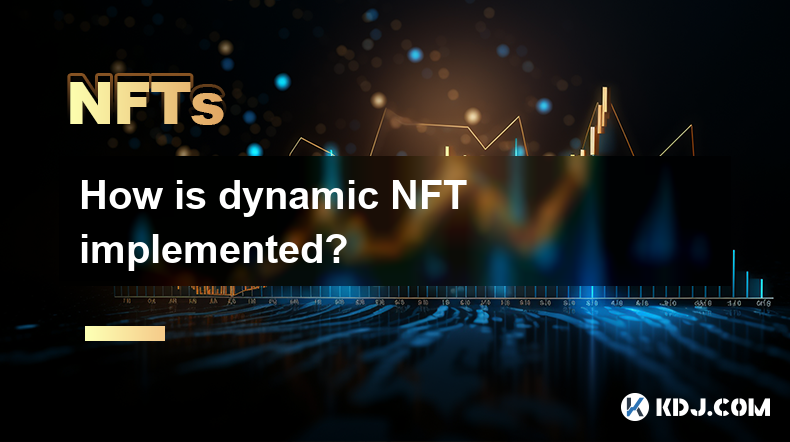
Dynamic NFTs, or dNFTs, represent a fascinating evolution in the world of non-fungible tokens. Unlike static NFTs, which remain unchanged once minted, dynamic NFTs can evolve, change, or update based on certain conditions or external data. This article will delve into the implementation of dynamic NFTs, exploring the technologies and processes involved in creating these adaptable digital assets.
Understanding Dynamic NFTs
Dynamic NFTs are a type of NFT that can change over time. These changes can be triggered by various factors, such as time, user interaction, or external data feeds. The core idea behind dNFTs is to create NFTs that are more interactive and engaging, offering a richer experience for owners and collectors.
The implementation of dynamic NFTs involves several key components, including smart contracts, oracles, and sometimes even off-chain data processing. These elements work together to ensure that the NFT can update its state dynamically.
Smart Contracts and Dynamic NFTs
Smart contracts are the backbone of any NFT, including dynamic ones. They are self-executing contracts with the terms of the agreement directly written into code. For dynamic NFTs, smart contracts are programmed to respond to specific triggers or conditions.
To implement a dynamic NFT, the smart contract must be designed to accept and process data that can change the NFT's attributes. This could be anything from changing the image displayed to altering the metadata associated with the NFT.
- Create a smart contract: Use a blockchain platform like Ethereum, which supports smart contracts. Write the contract in a language like Solidity, ensuring it can handle the logic for updating the NFT.
- Define the triggers: Specify what conditions will trigger a change in the NFT. This could be a time-based trigger, a user action, or data from an external source.
- Implement the update logic: Write the code that will update the NFT's state when the trigger conditions are met. This might involve changing the token's URI to point to a new image or updating metadata stored on the blockchain.
Oracles and External Data
Oracles play a crucial role in dynamic NFTs by providing a bridge between the blockchain and the real world. They fetch external data and feed it into the smart contract, allowing the NFT to react to real-world events or data.
For example, a dynamic NFT could change based on weather data, stock prices, or even social media activity. To implement this, the smart contract must be integrated with an oracle service.
- Choose an oracle service: Select a reliable oracle service like Chainlink, which can securely fetch and deliver data to your smart contract.
- Integrate the oracle: Modify the smart contract to call the oracle and receive data from it. This data will then be used to determine if and how the NFT should change.
- Set up the data feed: Configure the oracle to fetch the specific data you need, ensuring it is updated regularly and accurately.
Off-Chain Data Processing
In some cases, the logic for updating a dynamic NFT might be too complex to handle entirely on-chain. Off-chain data processing can be used to handle more intricate calculations or data manipulations before feeding the results back to the smart contract.
This approach involves running scripts or applications outside the blockchain to process data, then using an oracle to relay the processed data to the smart contract.
- Develop off-chain scripts: Write scripts or applications that can process the data according to your needs. This could involve machine learning algorithms, complex calculations, or data aggregation.
- Connect to the oracle: Ensure that the off-chain processing results are sent to the oracle, which will then relay them to the smart contract.
- Update the smart contract: The smart contract will use the processed data to update the NFT's state, ensuring that the changes are reflected on the blockchain.
User Interaction and Dynamic NFTs
User interaction can also drive changes in dynamic NFTs. This could involve actions taken by the NFT owner or other users interacting with the NFT through a decentralized application (dApp).
To implement user-driven changes, the smart contract must be designed to accept and process user inputs. This could involve voting mechanisms, where users can vote on changes to the NFT, or direct actions that trigger specific updates.
- Design the user interface: Create a user-friendly interface within a dApp that allows users to interact with the NFT. This could be a website or a mobile app.
- Implement user actions: Write the smart contract to accept and process user inputs. This might involve functions that can be called by users to trigger changes in the NFT.
- Test and deploy: Thoroughly test the user interaction mechanisms to ensure they work as intended, then deploy the smart contract and dApp to the blockchain.
Examples of Dynamic NFTs
To better understand how dynamic NFTs are implemented, let's look at a few examples:
- Weather-dependent NFTs: An NFT that changes its appearance based on real-time weather data. The smart contract is integrated with an oracle that fetches weather data, and the NFT's image is updated accordingly.
- Time-based NFTs: An NFT that evolves over time, perhaps aging or changing its appearance as time passes. The smart contract includes a timer that triggers updates at specific intervals.
- User-driven NFTs: An NFT that changes based on user votes or actions. The smart contract includes functions that allow users to vote on changes, and the NFT updates based on the outcome of these votes.
Frequently Asked Questions
Q: Can dynamic NFTs be used on any blockchain?
A: Dynamic NFTs can be implemented on any blockchain that supports smart contracts, such as Ethereum, Binance Smart Chain, or Solana. However, the specific implementation details may vary depending on the blockchain's capabilities and the tools available.
Q: Are dynamic NFTs more expensive to create than static NFTs?
A: The cost of creating dynamic NFTs can be higher due to the complexity of the smart contracts and the need for oracles or off-chain processing. However, the exact cost depends on the specific implementation and the blockchain used.
Q: How secure are dynamic NFTs?
A: The security of dynamic NFTs depends on the security of the underlying smart contract and the reliability of any oracles or off-chain systems used. It's crucial to thoroughly test and audit the smart contract to ensure it is secure against potential vulnerabilities.
Q: Can the changes in a dynamic NFT be reversed?
A: Whether changes in a dynamic NFT can be reversed depends on how the smart contract is programmed. Some dynamic NFTs may allow for reversals under certain conditions, while others may be designed to be permanent. It's important to understand the specific rules governing the NFT before purchasing or interacting with it.
Disclaimer:info@kdj.com
The information provided is not trading advice. kdj.com does not assume any responsibility for any investments made based on the information provided in this article. Cryptocurrencies are highly volatile and it is highly recommended that you invest with caution after thorough research!
If you believe that the content used on this website infringes your copyright, please contact us immediately (info@kdj.com) and we will delete it promptly.
- Many of the main Altcoin such as XRP, DOT and Avax have seen their price block or lose momentum despite the solidity of the communities and the wide adoption.
- 2025-04-13 04:10:12
- Bitcoin and the Crypto Market Rebound Following Donald Trump's Decision to Exempt Tech Products From Tariffs
- 2025-04-13 04:10:12
- Bridging the US Capital Markets and Asian Liquidity Hubs Is the Key to Unlocking Institutional Crypto Adoption
- 2025-04-13 04:05:12
- Aureal One and DexBoss: Exploring New Blockchain Projects with Lucrative Presales
- 2025-04-13 04:05:12
- Homeless man rushed to hospital after being hit in the eye with a 20p coin allegedly shot from a catapult
- 2025-04-13 04:00:12
- 5 Cryptos That Could Explode in 2025 After a Bearish Start to the Year
- 2025-04-13 04:00:12
Related knowledge
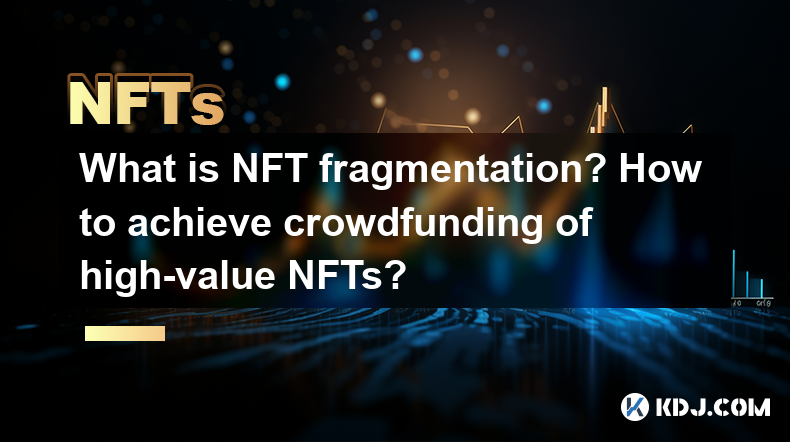
What is NFT fragmentation? How to achieve crowdfunding of high-value NFTs?
Apr 12,2025 at 12:00am
What is NFT Fragmentation? How to Achieve Crowdfunding of High-Value NFTs? NFT fragmentation is a process that allows high-value non-fungible tokens (NFTs) to be divided into smaller, more affordable pieces. This practice democratizes access to valuable digital assets, enabling more people to invest in and own parts of these NFTs. Fragmentation transfor...
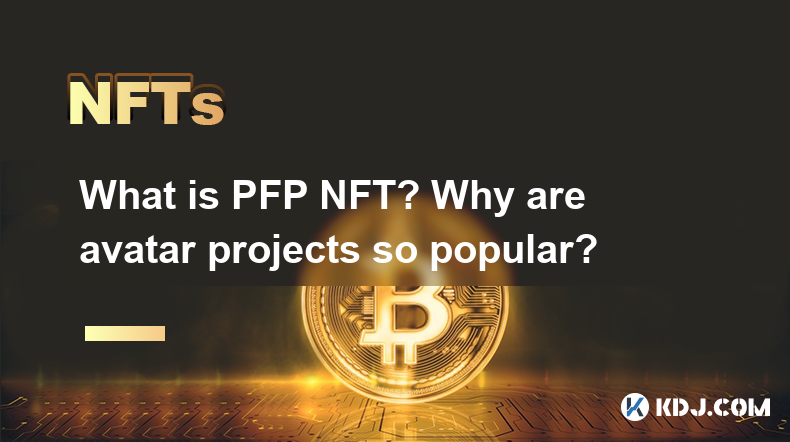
What is PFP NFT? Why are avatar projects so popular?
Apr 12,2025 at 09:22am
PFP NFTs, or Profile Picture Non-Fungible Tokens, have become a significant trend within the cryptocurrency and blockchain community. These digital assets, often in the form of unique and artistically designed images, serve as avatars for users across various social media platforms and digital communities. The rise in popularity of PFP NFTs can be attri...
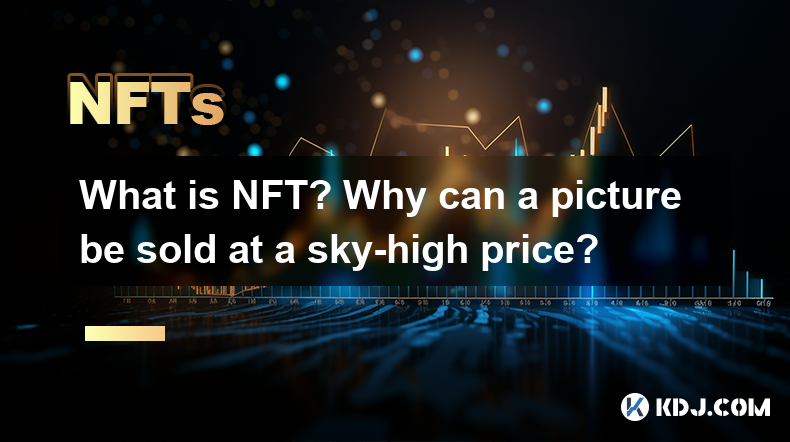
What is NFT? Why can a picture be sold at a sky-high price?
Apr 12,2025 at 05:28am
What is NFT? Why can a picture be sold at a sky-high price? Non-Fungible Tokens (NFTs) have taken the cryptocurrency world by storm, revolutionizing the way digital assets are bought, sold, and owned. But what exactly is an NFT, and why are some digital images fetching astronomical prices? Let's delve into the fascinating world of NFTs and explore the r...

How is dynamic NFT implemented?
Apr 11,2025 at 04:56am
Dynamic NFTs, or dNFTs, represent a fascinating evolution in the world of non-fungible tokens. Unlike static NFTs, which remain unchanged once minted, dynamic NFTs can evolve, change, or update based on certain conditions or external data. This article will delve into the implementation of dynamic NFTs, exploring the technologies and processes involved ...
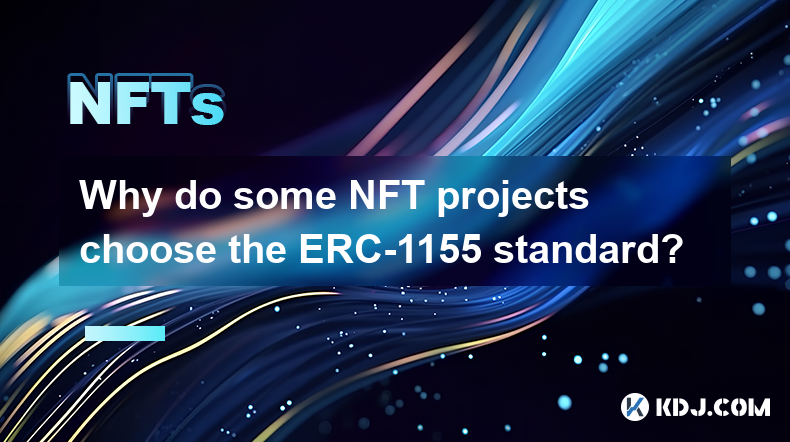
Why do some NFT projects choose the ERC-1155 standard?
Apr 08,2025 at 11:49am
The world of Non-Fungible Tokens (NFTs) has seen a significant rise in popularity and innovation, leading to the development of various token standards. Among these, the ERC-1155 standard has emerged as a versatile and efficient choice for many NFT projects. This article delves into the reasons why some NFT projects opt for the ERC-1155 standard, explor...

What is the essential difference between NFT and Bitcoin?
Apr 11,2025 at 12:14pm
The world of cryptocurrencies and digital assets has seen significant growth and diversification over the years, with Bitcoin and Non-Fungible Tokens (NFTs) being two of the most talked-about innovations. While both fall under the broader umbrella of blockchain technology, they serve different purposes and have distinct characteristics. This article wil...

What is NFT fragmentation? How to achieve crowdfunding of high-value NFTs?
Apr 12,2025 at 12:00am
What is NFT Fragmentation? How to Achieve Crowdfunding of High-Value NFTs? NFT fragmentation is a process that allows high-value non-fungible tokens (NFTs) to be divided into smaller, more affordable pieces. This practice democratizes access to valuable digital assets, enabling more people to invest in and own parts of these NFTs. Fragmentation transfor...

What is PFP NFT? Why are avatar projects so popular?
Apr 12,2025 at 09:22am
PFP NFTs, or Profile Picture Non-Fungible Tokens, have become a significant trend within the cryptocurrency and blockchain community. These digital assets, often in the form of unique and artistically designed images, serve as avatars for users across various social media platforms and digital communities. The rise in popularity of PFP NFTs can be attri...

What is NFT? Why can a picture be sold at a sky-high price?
Apr 12,2025 at 05:28am
What is NFT? Why can a picture be sold at a sky-high price? Non-Fungible Tokens (NFTs) have taken the cryptocurrency world by storm, revolutionizing the way digital assets are bought, sold, and owned. But what exactly is an NFT, and why are some digital images fetching astronomical prices? Let's delve into the fascinating world of NFTs and explore the r...

How is dynamic NFT implemented?
Apr 11,2025 at 04:56am
Dynamic NFTs, or dNFTs, represent a fascinating evolution in the world of non-fungible tokens. Unlike static NFTs, which remain unchanged once minted, dynamic NFTs can evolve, change, or update based on certain conditions or external data. This article will delve into the implementation of dynamic NFTs, exploring the technologies and processes involved ...

Why do some NFT projects choose the ERC-1155 standard?
Apr 08,2025 at 11:49am
The world of Non-Fungible Tokens (NFTs) has seen a significant rise in popularity and innovation, leading to the development of various token standards. Among these, the ERC-1155 standard has emerged as a versatile and efficient choice for many NFT projects. This article delves into the reasons why some NFT projects opt for the ERC-1155 standard, explor...

What is the essential difference between NFT and Bitcoin?
Apr 11,2025 at 12:14pm
The world of cryptocurrencies and digital assets has seen significant growth and diversification over the years, with Bitcoin and Non-Fungible Tokens (NFTs) being two of the most talked-about innovations. While both fall under the broader umbrella of blockchain technology, they serve different purposes and have distinct characteristics. This article wil...
See all articles

















































































